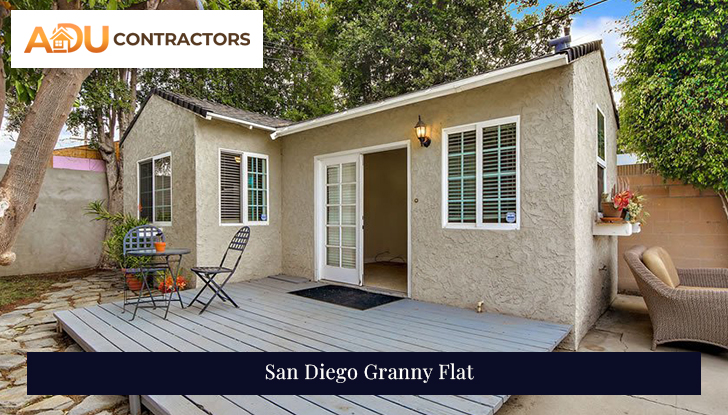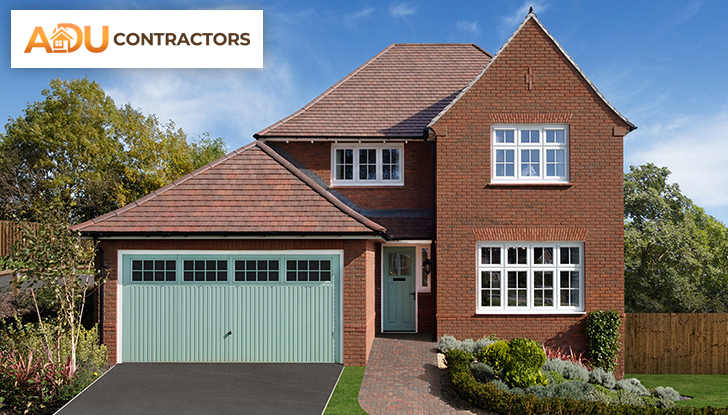Create more living space with a San Diego granny flat! Accessory Dwelling Unit contractor in San Diego offers a unique and cost-efficient alternative to traditional remodeling and construction projects.
Our ADU contractors at ADU Contractors will work on your San Diego granny flat. We aim to add value to your home and provide extra living space for family members or tenants.
And we are working with experienced granny flat builders to ensure quality and cost-efficiency. We’ll also touch on the many designs, styles, and materials available to find the perfect granny flat for your property.

Are you considering building a San Diego granny flat on your property? If so, what type of ADU is right for you? There are several granny flats, and each comes with benefits and drawbacks.
Let’s discuss some of the most general types in more detail:
An attached ADU is connected to the main house and shares one or more walls. This type of ADU is ideal for homeowners who want easy access to their rental unit or don’t want to maintain their current landscaping.
The ADU builders will assist you in adhering to the setback regulations with this type of San Diego granny flat that you will need to do so. The construction must be 10 feet from the main structure and 5 feet inside the perimeter walls. 1200 square feet may be available for the inside.
A detached ADU is separated from the main house and has its entrance. This type of ADU is perfect for homeowners who want more privacy or have limited space to work with. The interior area of this detached San Diego granny flat unit might be 1200 square feet or half the size of the main structure. Yet, there needs to be accessible to the accessory living unit from the main structure.
An existing garage can be transformed into a dwelling space to create an ADU. This type of San Diego granny flat is ideal for homeowners who want to save money and only require a little extra living space.
A basement conversion ADU is created by converting an existing basement into a living space. This type of San Diego granny flat is ideal for homeowners with a currently underutilized basement who want to make the most of their existing space.
A Junior ADU is a small unit created by converting a portion of an existing home. This type of San Diego granny flat is ideal for homeowners who want to rent out a portion of their existing home to help with mortgage payments. Likewise, 500 square feet should be available inside a JADU.
An ADU can provide homeowners with numerous benefits, including additional rental income, increased property value, and more living space.
When choosing the type of ADU that’s best for you, consider your budget, space availability, and lifestyle needs.
Ultimately, the type of ADU you choose should fit your needs and provide you with a comfortable and functional living space.
If you’re looking for a way to expand your living space or even generate some rental income, building an Accessory Dwelling Unit (ADU) could be the solution you’re looking for. But how does the process of ADU construction work?
First, you must consult an architect or contractor to design your ADU. It involves figuring out the size and layout of the unit, what features and amenities it will have, and how it will be integrated into the existing property. It is where your creativity and vision for your space can come into play – you could build a sleek, modern studio apartment or a cozy, rustic bungalow, depending on your preferences and needs.
When the San Diego granny flat team understands the project’s scope, they will create the designs. We will present a 3D version to you, and if you insist on adjustments, we will ensure to make it as per your requests.
After finalizing the design, we must obtain permits before construction. It will involve getting permits from the San Diego county planning and development to ensure the unit complies with local building codes and zoning regulations. It entails minimum square footage requirements, setbacks from property lines, and parking requirements. Depending on where you live, this can be complex and time-consuming, so it’s essential to be patient and thorough.
Once the permits are obtained, the San Diego granny flat construction process can start. It involves laying a foundation, framing the structure, installing plumbing and electrical systems, and putting on the finishing touches. Again, this is where your creativity can shine – you could choose eco-friendly features like solar panels or a rainwater collection system or opt for luxury touches like high-end appliances or custom cabinetry.

After construction is complete, the final step is to get the unit inspected and certified for occupancy. It ensures that the unit meets all safety and building standards and is fit for living. Once you have the green light, you can start enjoying your new ADU – whether renting it out to tenants or using it as a home office or guest suite.
In short, the San Diego granny flat construction involves working with professionals to design, permit, build, and certify a new self-contained residential unit on your property. It can be a complex and involved process, but with the right team and resources, it can also be a rewarding and exciting way to expand your living space and increase your property value.
The size and scope of the project will determine the time frame. The usual processing times are between six months and a year.
On the other hand, the garage conversion process should move more rapidly because the foundation is already in place.
Within two days, the work involved in designing can begin. On the other hand, you should begin construction once all necessary permits for your project have been secured.